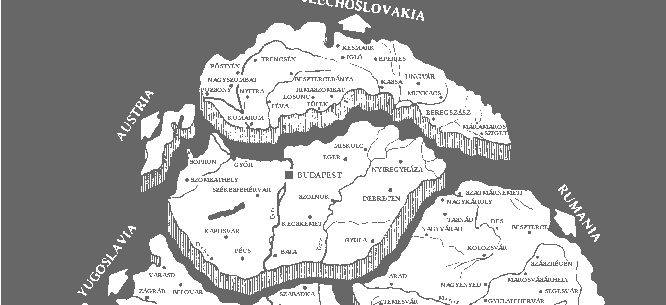History Returns, with a Vengeance
History Returns, with a Vengeance

by Paul Lendvai, trans. Keith Chester.
Columbia University Press, 2012, 236 pp.
In March 1990, I served as a member of an international team of observers to the first postcommunist elections in Hungary. It was a heady experience to bear witness to the crumbling of a totalitarian system and the dramatic, yet peaceful, emergence of a democratic transition.
One episode from that period: while walking along the fashionable Vaci utca pedestrian mall in downtown Budapest, I noticed numerous street vendors selling maps showing the pre-1914 borders of Hungary. This map included present day Slovakia, as well as Transylvania (now part of Romania) and parts of Ukraine, Yugoslavia, and even Austria. I knew that for Hungarians the peace treaty imposed by the Allied victors at Trianon in 1920 was a ruthless diktat that broke up their historical homeland.
When I pointed out these maps to some of my fellow Western election observers, they suggested that it was innocent nostalgia. To me, it seemed irresponsible and worrisome to imagine a different outcome to the First World War. At a time when Western triumphalism was celebrating Francis Fukuyama’s “End of History,” this return to history seemed ominous.
But I could never have guessed that twenty years later, in 2010, a democratically elected nationalist-populist government would designate June 4, the day of the signing of the Trianon Treaty, as “Day of National Unity.” Nor could I imagine that after a festive session of Parliament in June 2010, I would witness black-clad militia members marching in front of St. Stephen’s Basilica with flags of cities in Romania, Slovakia, and Serbia that had belonged to the Kingdom of Hungary before the First World War.
Few people are better qualified to recount this turn in Hungary’s recent history than the historian and journalist Paul Lendvai, who fled his native Hungary for Austria after the 1956 revolution and has since published numerous books on Central Eastern Europe as well as served as a correspondent for the Financial Times and headed Radio Austria International. Most of his family was murdered in the Holocaust, and he brings to his analysis a Mitteleuropa sensitivity to nationalism, minority rights, and historical memory. All this makes his book essential for understanding the current developments in Hungary.
Among postcommunist countries, Hungary seemed initially to be the paragon of a successful transition to democracy and a market economy. The 1989–1990 transition was an outcome of peaceful roundtable negotiations between the ruling Communist Party and the major opposition group, the Hungarian Democratic Forum (MDF). It was also anchored in two decades of what was then called “goulash communism”: a kind of soft, one-party rule identified with the Communist leader János Kádár, whose mott...
Subscribe now to read the full article
Online OnlyFor just $19.95 a year, get access to new issues and decades' worth of archives on our site.
|
Print + OnlineFor $35 a year, get new issues delivered to your door and access to our full online archives.
|




